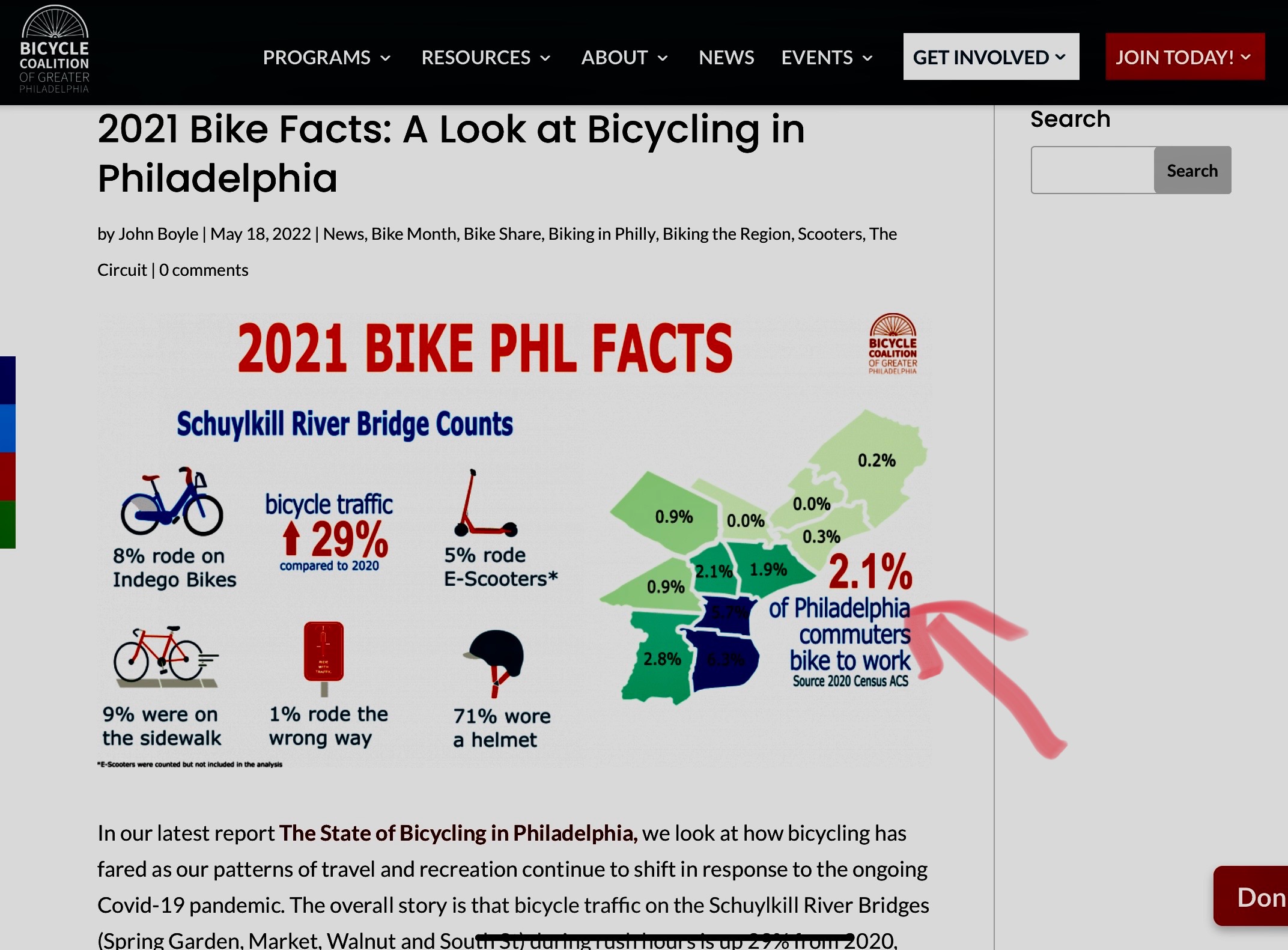Let’s admit bike lanes are a failed experiment
I’ve often thought the most entitled white people in America were in the Bicycle Coalition of Greater Philadelphia, which numbers a measly 2,400 members in the 5.7-million five-county area and yet gets politicians to lick its bicycle saddle.

Turns out the BCGP has a spinoff group called Philly Bike Action — think of it as Antifa on wheels — which showed up on a recent Sunday to interfere with law-abiding motorists. As the Inquirer subhead put it in the newspaper, “Philly Bike Action brought in bikes and cones to block cars from parking outside a Center City church.”
The headline did not indicate what the story said — the cars belonged to parishioners who used the bike lanes legally under a Sunday-worship exemption that has been around forever.
The PBA was founded last April 23 by bikeheads who claim they are interested in safety, but really just want special rules for themselves, like the bike lanes themselves.
I’ve been writing about bicycling in Philly -- for fun, I like calling it a cult -- since 2009 and sometime in 2010 the city announced it would add bike lanes and stated a goal of 6 percent of Philadelphians commuting by bike by 2020.
I strongly doubted it would happen, I ridiculed it in print, and was called all sorts of names by the bikeheads. Never bothered me, never stopped me.
In 2019, the city got to 2.6% of people commuting by bike (and under its definition of “commuting,” that means riding a bike to work only three times a week).
By 2021, it was 2.1%.
When I printed numbers like this, the bikeheads went bonkers, and accused me of lying, but the stats I use are Bicycle Coalition figures, drawn from the U.S. Census. Bike usage goes up and down by a tenth or two, but has never hit even 3%. The genius city planners were wrong, but the city kept adding bike lanes and still the numbers didn't move. You know that definition of insanity: Doing the same thing over and hoping for a different result.
Under Mayor Jim Kenney, the city stupidly doubled-down on failure -- more bike lanes, but no more people pedaling to work.
Bike lanes are a bust. Almost no one uses them. All they succeed at is slowing vehicular traffic, which actually increases air pollution.
Hopefully, Mayor Cherelle Parker will not fall under the sway of two-wheeled progressives, and ask herself, “What do the people want?”
I challenged the Bicycle Coalition to put bike lanes to a vote on a citywide referendum. They ran from that idea as if I asked them to drink a Dr. Pepper laced with cyanide, because they know bike lanes are vastly unpopular with the majority.
Given that the Bicycle Coalition has almost no members, and represents a thin sliver of bike users, it has enormous political power. I give it credit for convincing lawmakers that it represents some kind of a movement. Not just here, but around the world, bicycles are a sacred cow.
The spinoff PBA claimed the parked cars outside of the church makes it unsafe for them. If they really feel unsafe, the Bicycle Coalition says what to do -- get on the sidewalk and walk your bike past the obstruction. (When was the last time you saw a biker walk his bike on the sidewalk? And, yes, I said “his” because cyclists in the city are overwhelmingly male, and often boorish about his “rights” on a bike.)
The fact that the parishioners were trying to park legally meant nothing to the protestors.
Cyclists often yell at motorists stopped briefly in the bike lane -- as they are allowed to do -- to pick up or discharge passengers.
On the other hand, bicyclists are not allowed to go through red lights, which almost all do with impunity. And are almost never ticketed.
Because they are not gasoline powered, they feel entitled.
Mayor Parker seems to be big on law enforcement. How about letting the cyclists feel the inclusion of being ticketed?



